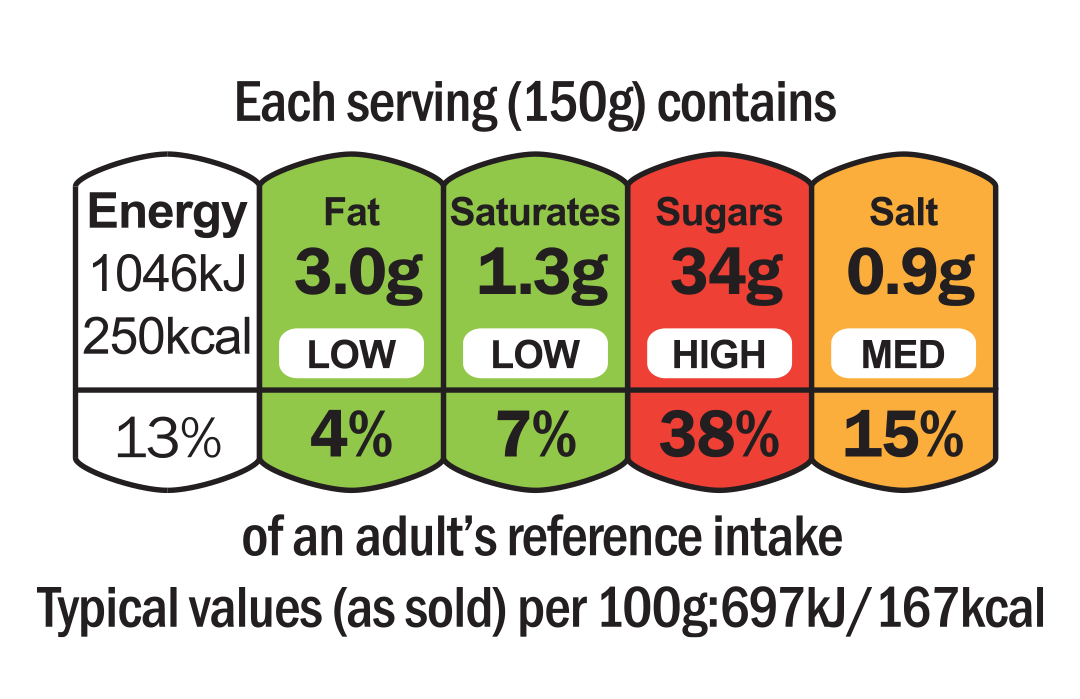The nutrition facts must be displayed on food labels. It should show the content of energy, fat, saturated fat, total sugars, and salt in this order. The label consists of three colors: green, orange, and red, except for the energy content as it is displayed without any color.
Energy alone or Energy +4 format
Can be expressed per 100g/ml or per serving or per both.
Energy value must be expressed at least per 100g
Energy must be expressed in KJ and Kcal
Nutritional elements are color coded and HML coded
Energy value must be colorless
If TFL is per portion, then “of an adult’s reference intake” or “Reference intake of an average adult (8400kJ/2000kcal)”
If TFL is per 100g/100ml “Reference intake of an average adult (8400kJ/2000kcal)”

Green: the green color indicates that the product contains low levels of fats, saturated fats, total sugar, or salt.
Orange: the orange color indicates that the product contains medium levels of fats, saturated fats, total sugar, or salt.
Red: the red color indicates that the product contains high levels of fats, saturated fats, total sugar, or salt.
Format of TFL:
Location on the pack: FOP, principal field of vision
Horizontal vs. vertical representation

TFL Declaration:
Format 1-Energy (Used under certain conditions)
Small packs
Multilanguage packs
Multipack
Product with limited space due to pack shape
Format 2- Energy +4 (Must be used whenever possible)